You don’t need silence, incense, or hours of free time to start mindfulness meditation. Just a few quiet minutes and focus on your breath. An open mind is all you need to begin a calmer, more present life.
This direct will tell you how to think and make strides in your mental health. It breaks down meditation into simple steps. You’ll see that meditation is easy yet powerful.
Let this guide help you find inner peace and reduce stress through mindfulness.
Key Takeaways
- Mindfulness meditation can be practiced in just a few minutes a day.
- No need for special setups; focus on your breath.
- This guide simplifies the process for beginners.
- You can achieve inner peace and stress relief with regular practice.
- Mindfulness meditation enhances overall mental well-being.
What is Mindfulness Meditation?
Understanding mindfulness meditation starts with knowing what it is. You might ask, what is mindfulness and how does it relate to meditation? Exploring these questions helps us appreciate the practice more.
Defining Mindfulness and Meditation
Mindfulness is about being in the moment without judgment. It’s about noticing thoughts and feelings as they come up. Contemplation may be a way to induce this state. It uses techniques like focusing on breath or body scanning to help you stay mindful.
The Role of Mindful Awareness
Mindful awareness is key in meditation. It lets you see your thoughts and feelings without getting caught up in them. By practicing mindful awareness, you build a strong base for staying present. This focus is essential for getting the most out of meditation and improving your life.
Benefits of Mindfulness Meditation
Mindfulness meditation brings many benefits, improving your overall well-being. It helps reduce stress, boosts mental clarity, and balances your emotions.
Stress Relief through Meditation
Mindfulness meditation lowers stress levels. Considers appear it can diminish cortisol, the push hormone. This leads to relaxation and calms your mind.
Regular practice reduces anxiety and helps manage stress better.
Improved Focus and Concentration
Mindfulness improves focus and concentration. It trains your mind to stay present and avoid distractions. This strengthens your cognitive abilities.
It makes you more productive in daily tasks. Meditation helps you stay focused and directed.
Emotional Balance and Inner Peace
Mindfulness meditation also promotes emotional balance. It permits you to acknowledge your considerations and sentiments without judgment. This leads to inner peace and emotional strength.
With normal meditation, you’ll handle life’s hurdles better. It makes a difference to keep up a steady emotional state..
Your Mindfulness Meditation Guide for Beginners
Starting your mindfulness meditation journey can feel overwhelming. Many myths surround it. This direct will clear up key concepts and expose common misconceptions.
Understanding Key Concepts
At the heart of mindfulness meditation is observing without judgment. You should see thoughts or feelings as they come without calling them good or bad. Acceptance is also key; it means embracing the present moment, even if it’s hard.
This understanding makes your meditation journey rewarding. It helps you build a positive relationship with your practice.
Common Misconceptions
Many think meditation means having a blank mind. They believe stopping thoughts is the goal. But, the real aim is to watch thoughts without getting caught up in them.
Knowing this helps you stay motivated and avoid getting frustrated. It’s crucial for making mindfulness a part of your everyday life.
How to Prepare for Mindfulness Meditation
Getting ready for mindfulness meditation is key. It’s about setting up your space and tools right. This makes your meditation more rewarding. You can also improve your practice with quiet space techniques and the right time.
Choosing a Quiet Space
Finding a quiet spot is crucial. It should be free from distractions. This may be a corner in your domestic or a calm open air area. Think about:
- Comfortable seating or a soft surface
- Natural lighting or soft illumination
- Familiar soothing elements like plants or calming sounds
These quiet space tips help create a welcoming space. It helps you focus better on your meditation.
Setting a Timer for Your Practice
A meditation timer keeps you on track. Start with short sessions of 5 to 10 minutes if you’re new. Here are some tips for using a timer well:
- Choose a gentle chime rather than a harsh alarm
- Slowly increment the length as you ended up more comfortable
- Use apps designed for meditation timers to track your practice
Using a timer in this way improves your meditation. It also helps you stay consistent.
Simple Meditation Steps to Get Started
Starting your meditation journey is easy and rewarding. Follow these simple steps to build a consistent practice. Focus on your breathing and stay present. Each step helps you grow in awareness as you go.
Focusing on Your Breathing
Start by sitting comfortably. Close your eyes or look softly ahead. Breathe in deeply through your nose, letting your belly rise. At that point, breathe out gradually through your mouth, feeling your body relax.
Keeping your focus on your breath is key. It’s a strong anchor for your attention, crucial for mindfulness.
Noticing Thoughts without Judgment
While meditating, thoughts will come and go. It’s okay. Don’t get caught up in them. Just notice and let them go.
Seeing your thoughts without judgment boosts your awareness. It makes a difference you remain centered on your breath. This leads to a calmer mind, essential for mindfulness.
Gently Returning to the Present Moment
On the off chance that your intellect meanders, bring it back to your breath. This is the heart of mindfulness. It makes a difference you live within the present and discover peace.
With each return, you’re improving your concentration. This makes your meditation better and your daily life too.
Helpful Tools for Beginners
Starting your mindfulness meditation journey can be exciting. Using the right tools can make it even better. Apps and guided meditations are great for beginners. They help you get started and make meditation enjoyable.
Meditation Apps and Timers
Apps like Headspace and Calm are idealized for beginners. They offer guided meditations that teach you mindfulness. These apps also have timers to help you set your meditation time.
This makes it easier to keep up with your practice. Consistency is key to improving your mindfulness skills.
Guided Meditation Basics
Learning about guided meditation can be a big help. Guided sessions give you instructions and lead you through different techniques. This makes meditation feel less scary.
Having someone to guide you can also make you feel calmer and more focused. Using these tools and guided meditations can make meditation more fun and accessible for you.
Creating a Daily Mindfulness Practice
Adding mindfulness to your daily routine can boost your well-being. Start by weaving short meditation sessions into your day. This helps you connect more deeply with yourself.
By making mindfulness a daily habit, you become better at managing stress. You also get to enjoy a calm mind.
Establishing Peaceful Mind Habits
Consistency is crucial for peaceful mind habits. Pick specific times for your mindfulness practice. It could be right after waking up, during lunch, or before bed.
Indeed, a fair five minutes of contemplation a day can make a huge distinction. Take time to think about how mindfulness improves your mood and focus.
Incorporating Mindful Breathing
Mindful breathing is a great way to bring mindfulness into your daily life. Use it when you’re feeling stressed, like in line or waiting for coffee. Pay attention to your breath, noticing how it moves in and out.
This simple act can turn any moment into a mindful one. It strengthens your peaceful mind habits.
Conclusion
As you finish this mindfulness meditation guide for beginners, remember the big impact meditation has on your mind and life. Every moment you meditate helps you grow and improves your daily life. It brings many benefits to your daily routine.
Starting is easy. You can start with just a few minutes a day. At that point, you’ll be able to include more time as you get more comfortable. The most important thing is to be consistent and open to trying new things. Discover what works best for you as you start contemplating.
Every step you take on the path to mindfulness is important. It leads to a more peaceful mind. By embracing change and nurturing your practice, you’ll see the benefits of mindfulness every day.


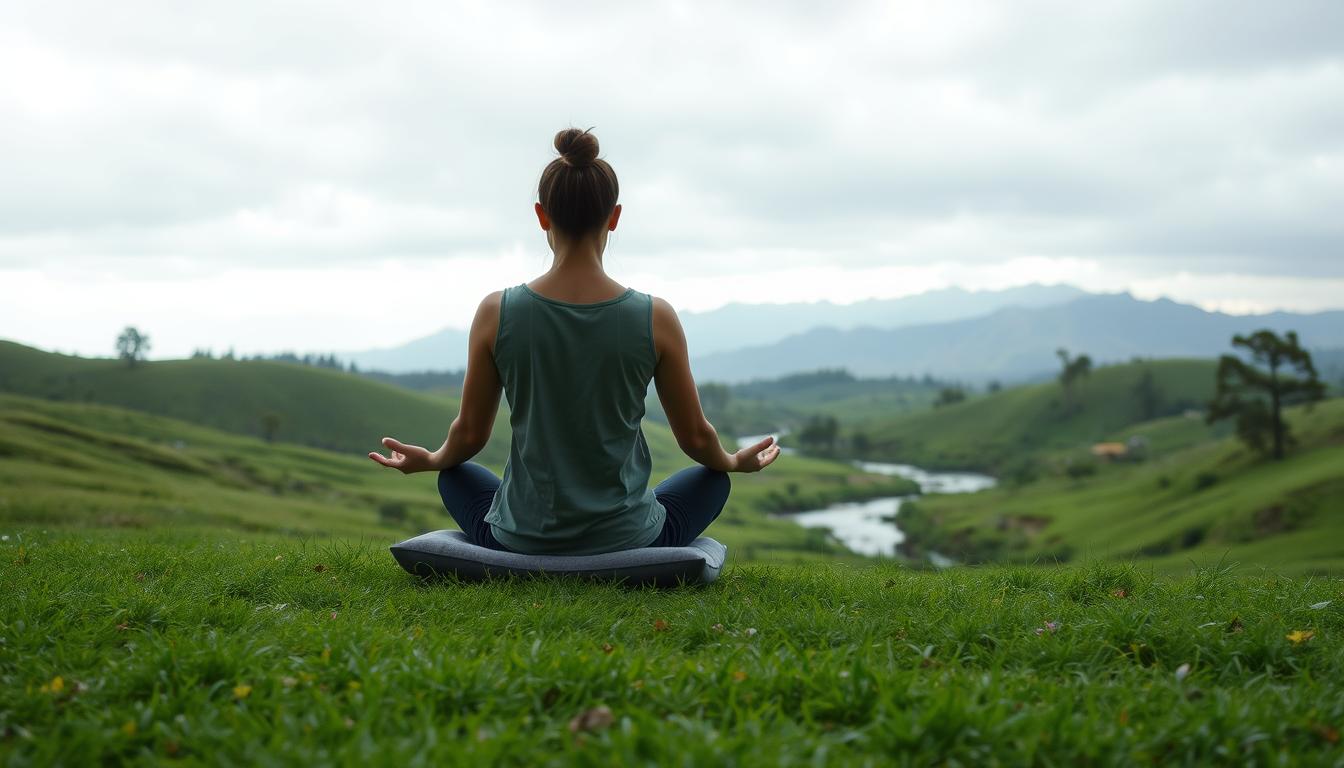
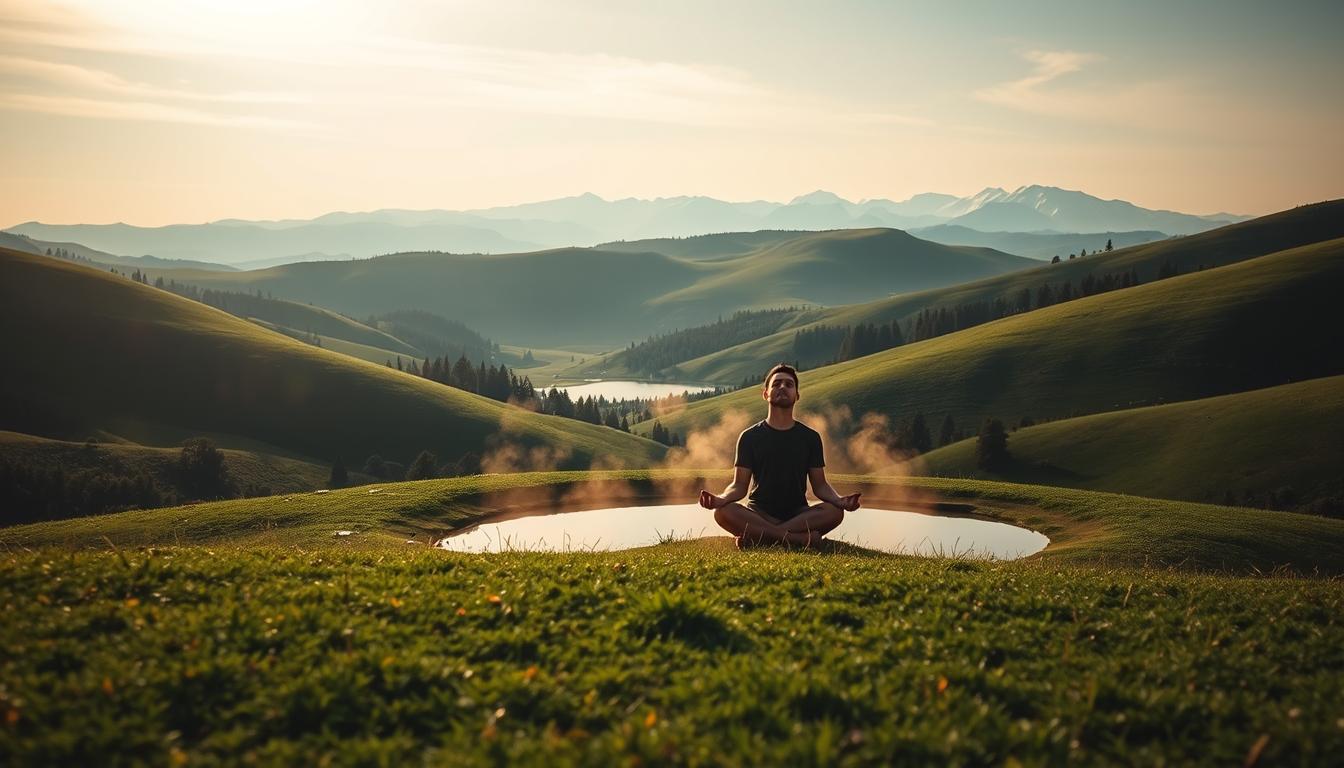
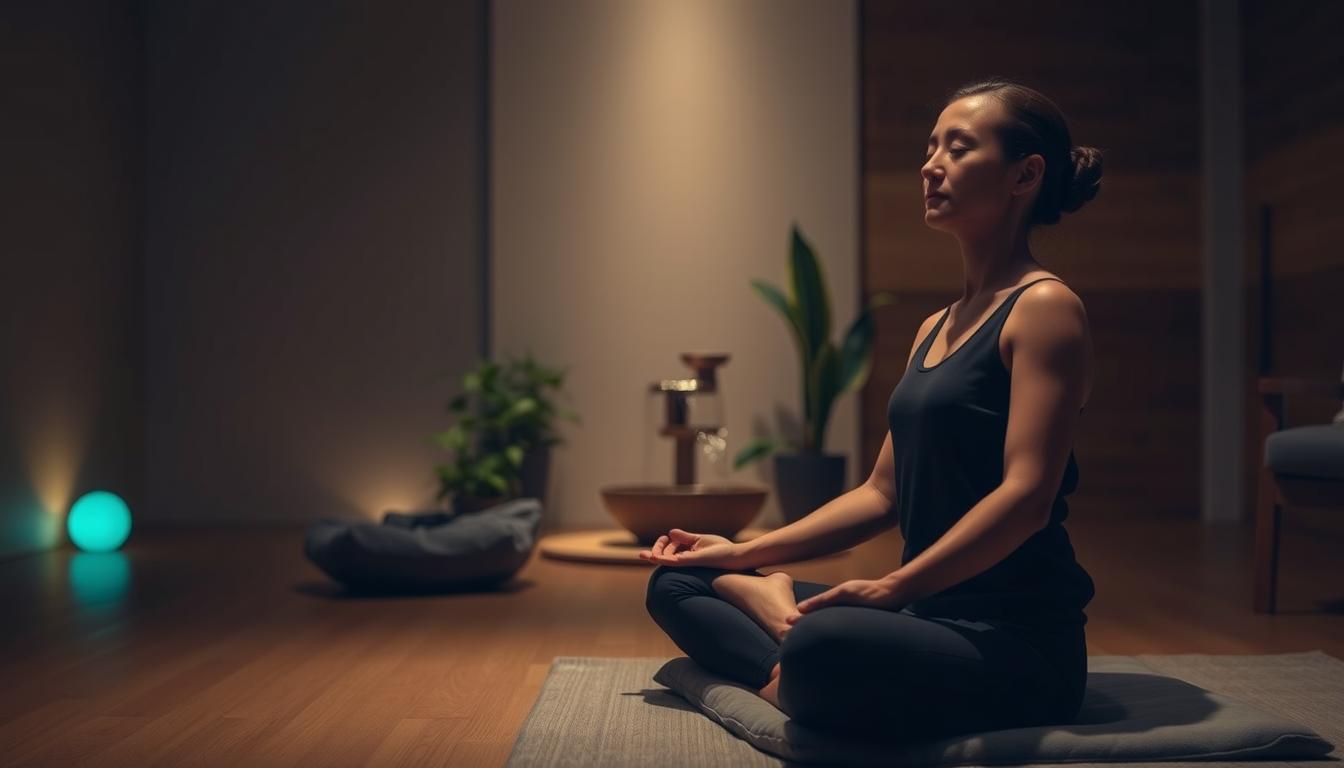
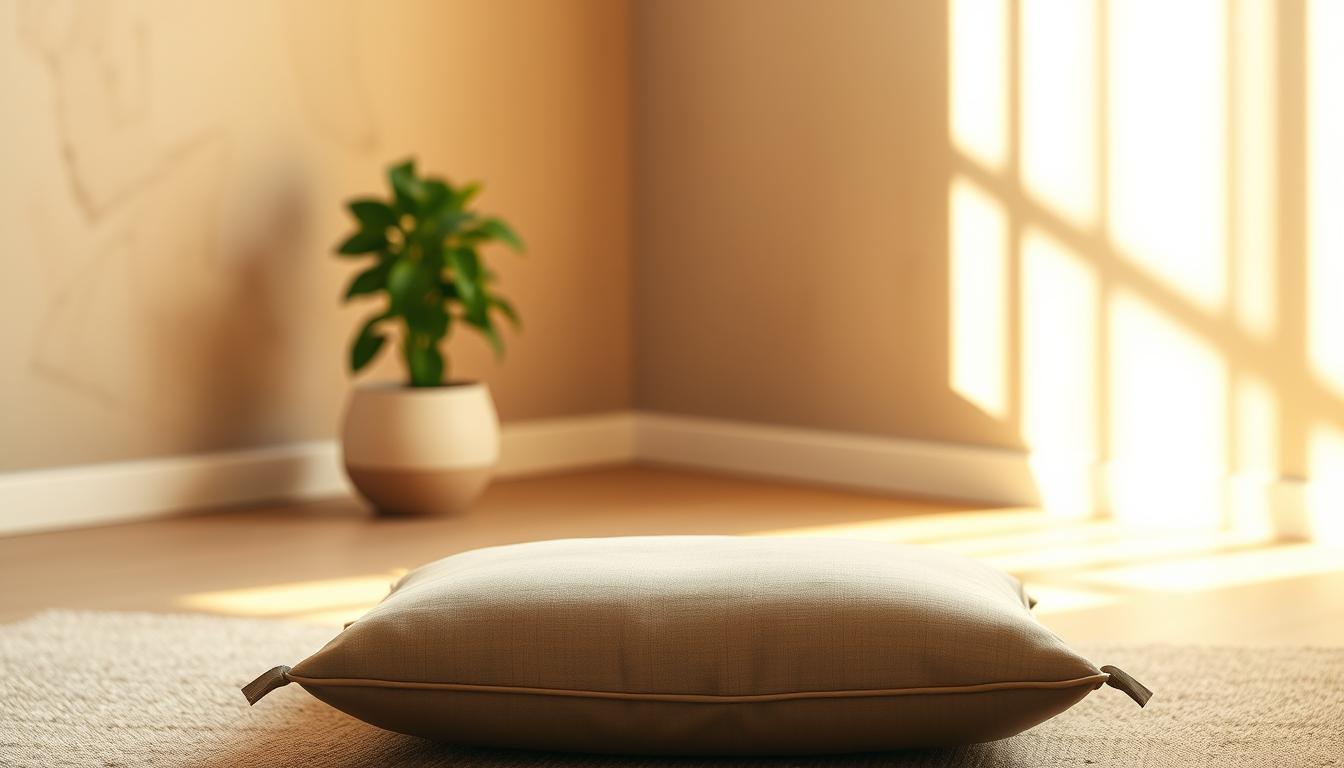
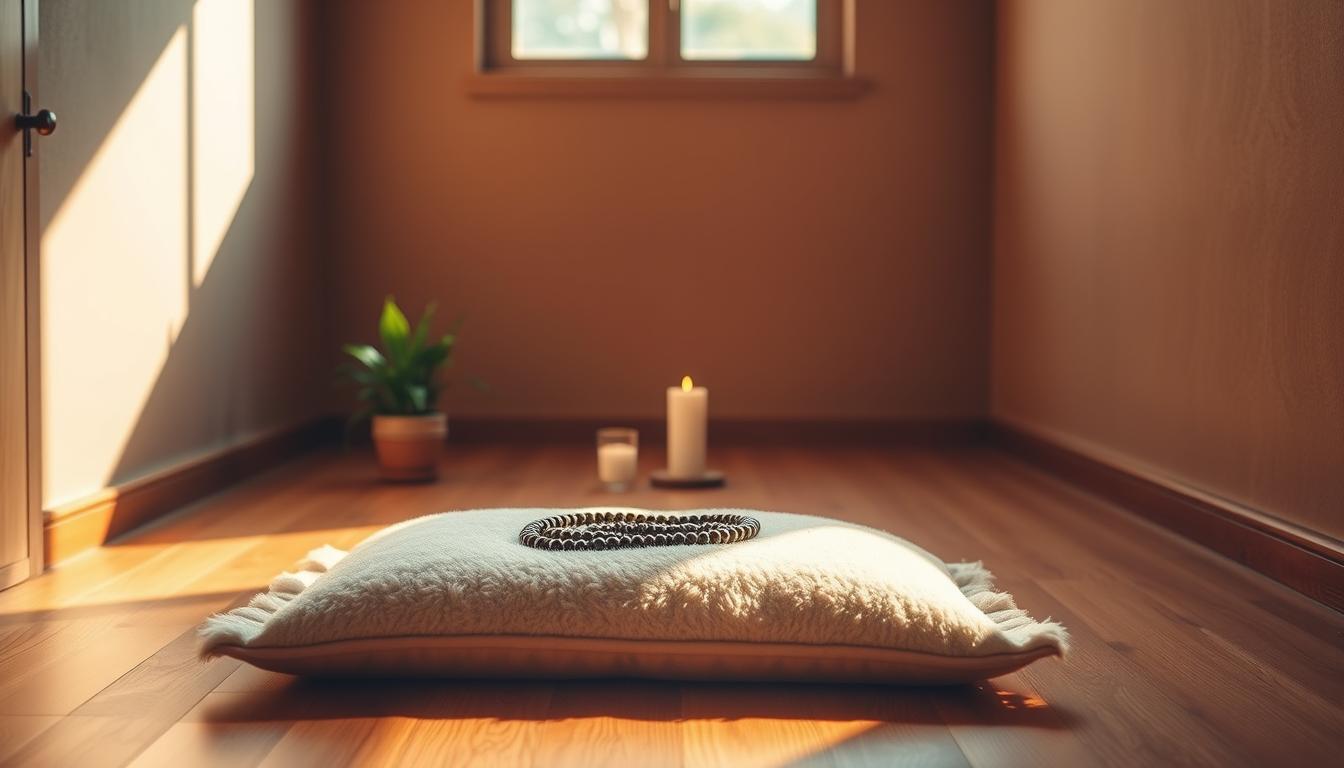


GIPHY App Key not set. Please check settings